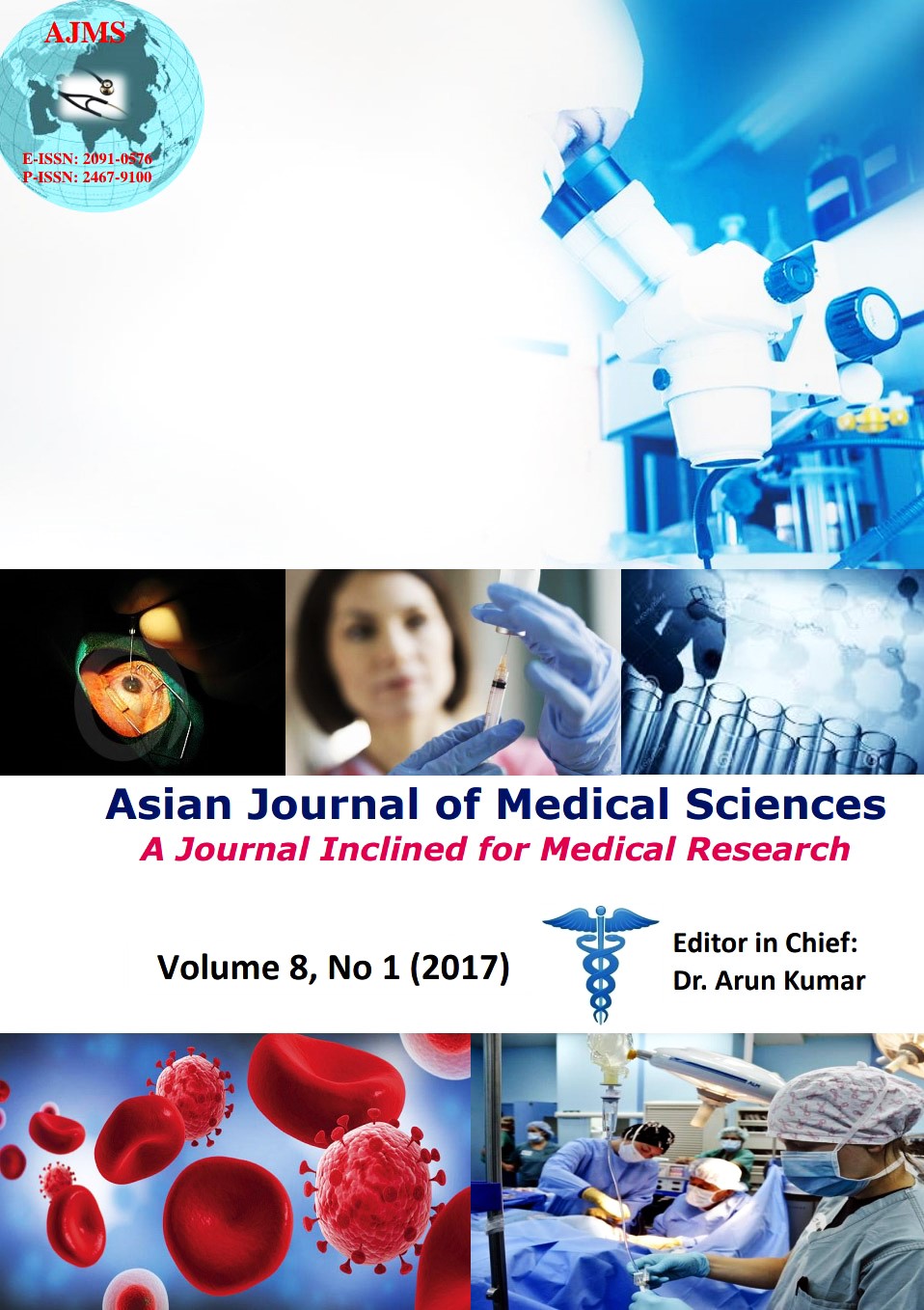The intraoperative pathological findings in cases of chronic suppurative otitis media with central perforation of tympanic membrane at a tertiary care centre in Eastern Nepal
Keywords:
Central perforation, Cholesteatoma, Chronic Suppurative Otitis Media, Mastoidectomy, Safe earAbstract
Background: Chronic suppurative otitis media (CSOM) is the chronic inflammation of the middle ear cleft. The atticoantral type is called unsafe type because of the associated complications due to granulations and cholesteatoma which may be life-threatening. CSOM with central perforation (tubotympanic type) is usually not associated with major complications such as cholesteatoma formation.
Aims and Objectives: To find out the intraoperative pathological findings in cases of CSOM with central perforation (tubotympanic type)
Materials and Methods: This descriptive, cross sectional study has been conducted in the Department of Ear, Biratnagar Eye Hospital in Nepal over 2 years. Study group includes 172 patients having CSOM with central perforations in the tympanic membranes who underwent different types of procedures. Preoperatively, all the patients were evaluated with otoscopy, microscopy, pure-tone audiometry, and some patients with computed tomography scan. The pathological findings were confirmed with biopsy. The findings were tabulated and analysed.
Results: 21(12.2%) patients were having dry central perforation with normal Eustachian tube function. 95 patients, i.e., 55.23% were having granulations in attic, aditus, antrum. 25 (14.53%) cases were having ossicular erosion.5 (2.9%) cases had tympanosclerosis in middle ear. 1 (0.58%) case had facial nerve dehiscence. 16 (9.3%) cases had oedema of middle ear mucosa/aural polyp from middle ear. Surprisingly 9 patients, i.e., 5.23% were having cholesteatoma which was confirmed by histopathological study.
Conclusion: This study shows that cholesteatoma can be found in tubotympanic type of CSOM, along with other pathological findings. Hence it is on the part of the surgeon to be careful while planning surgery on their patients with CSOM (tubotympanic type), remembering that all safe CSOM might not always be safe.
Asian Journal of Medical Sciences Vol.8(1) 2017 42-47
Downloads
Downloads
Published
How to Cite
Issue
Section
License
Authors who publish with this journal agree to the following terms:
- The journal holds copyright and publishes the work under a Creative Commons CC-BY-NC license that permits use, distribution and reprduction in any medium, provided the original work is properly cited and is not used for commercial purposes. The journal should be recognised as the original publisher of this work.
- Authors are able to enter into separate, additional contractual arrangements for the non-exclusive distribution of the journal's published version of the work (e.g., post it to an institutional repository or publish it in a book), with an acknowledgement of its initial publication in this journal.
- Authors are permitted and encouraged to post their work online (e.g., in institutional repositories or on their website) prior to and during the submission process, as it can lead to productive exchanges, as well as earlier and greater citation of published work (See The Effect of Open Access).




